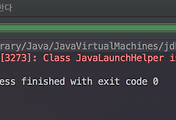안녕하세요? 이번 시간엔 Spring OAuth + Spring Session시 HTTP URL must not be null 발생의 원인 및 해결방안을 소개드리려 합니다.
모든 코드는 Github에 있기 때문에 함께 보시면 더 이해하기 쉬우실 것 같습니다.
(공부한 내용을 정리하는 Github와 세미나+책 후기를 정리하는 Github, 이 모든 내용을 담고 있는 블로그가 있습니다. )
문제 상황
Spring Session과 Spring OAuth2를 조합해서 로그인 시스템을 구축한다고 가정해보겠습니다.
Spring OAuth2 적용
가장 먼저 Spring OAuth2를 프로젝트에 적용시켜보겠습니다.
build.gradle
buildscript {
ext {
springBootVersion = '1.5.6.RELEASE'
}
repositories {
mavenCentral()
}
dependencies {
classpath("org.springframework.boot:spring-boot-gradle-plugin:${springBootVersion}")
}
}
apply plugin: 'java'
apply plugin: 'eclipse'
apply plugin: 'org.springframework.boot'
version = '0.0.1-SNAPSHOT'
sourceCompatibility = 1.8
repositories {
mavenCentral()
}
dependencies {
compile('org.springframework.boot:spring-boot-starter-web')
compile('org.springframework.security.oauth:spring-security-oauth2')
compile
compileOnly('org.projectlombok:lombok')
runtime('com.h2database:h2')
runtime('org.springframework.boot:spring-boot-devtools')
testCompile('org.springframework.boot:spring-boot-starter-test')
}
application.yml
spring: session: store-type: jdbc datasource: platform: h2 schema: classpath:schema-h2.sql h2: console: enabled: true path: /h2-console # h2 db 웹 클라이언트 접속 url devtools: livereload: enabled: true # 정적파일들의 실시간 갱신 jpa: hibernate: ddl-auto: create-drop security: basic: enabled: false # security 기본 인증 옵션 제거 logging: level: org.hibernate.type: trace # JPA로 생성되는 쿼리의 파라미터 값 확인
보안상 이슈가 될 수 있는 OAuth2 정보는 별도로 google.yml로 분리하겠습니다.
google.yml
google: client: clientId: //각자의 정보 clientSecret: //각자의 정보 accessTokenUri: https://accounts.google.com/o/oauth2/token userAuthorizationUri: https://accounts.google.com/o/oauth2/auth scope: email, profile resource: userInfoUri: https://www.googleapis.com/oauth2/v2/userinfo
자 이런 설정파일들을 OAuth2와 함께 적용해보겠습니다.
OAuth2.java
@Configuration @EnableOAuth2Client public class OAuthConfig { private OAuth2ClientContext oauth2ClientContext; private BeanFactory beanFactory; public OAuthConfig(OAuth2ClientContext oauth2ClientContext, BeanFactory beanFactory) { this.oauth2ClientContext = oauth2ClientContext; this.beanFactory = beanFactory; } @Bean public Filter ssoFilter() { OAuth2ClientAuthenticationProcessingFilter oauth2Filter = new OAuth2ClientAuthenticationProcessingFilter("/login"); OAuth2RestTemplate oAuth2RestTemplate = new OAuth2RestTemplate(googleClient(), oauth2ClientContext); oauth2Filter.setRestTemplate(oAuth2RestTemplate); oauth2Filter.setTokenServices(new UserInfoTokenServices(googleResource().getUserInfoUri(), googleClient().getClientId())); oauth2Filter.setAuthenticationSuccessHandler(successHandler()); // 인증 성공시 진행될 Handler 등록 return oauth2Filter; } @Bean public AuthenticationSuccessHandler successHandler(){ return (request, response, authentication) -> { System.out.println("성공!"); response.sendRedirect("/"); }; } @Bean @ConfigurationProperties("google.client") public OAuth2ProtectedResourceDetails googleClient() { System.out.println("google client Call"); return new AuthorizationCodeResourceDetails(); } @Bean @ConfigurationProperties("google.resource") public ResourceServerProperties googleResource() { System.out.println("google resource Call"); return new ResourceServerProperties(); } @Bean public FilterRegistrationBean oauth2ClientFilterRegistration(OAuth2ClientContextFilter filter) { FilterRegistrationBean registration = new FilterRegistrationBean(); registration.setFilter(filter); registration.setOrder(-100); return registration; } // google.yml을 import @Bean public static PropertySourcesPlaceholderConfigurer properties() { System.out.println("google yml Call"); YamlPropertiesFactoryBean yaml = new YamlPropertiesFactoryBean(); yaml.setResources(new ClassPathResource("google.yml")); PropertySourcesPlaceholderConfigurer propertySourcesPlaceholderConfigurer = new PropertySourcesPlaceholderConfigurer(); propertySourcesPlaceholderConfigurer.setProperties(yaml.getObject()); return propertySourcesPlaceholderConfigurer; } }
이렇게 간단하게 설정후, localhost:8080/login으로 접속해보시면 아주 잘 되는 것을 확인할 수 있습니다.
Spring Session 적용
Spring OAuth2가 아주 잘 적용되었으니, 곧바로 SpringSession 을 적용해보겠습니다.
build.gradle에 아래 2가지 의존성을 추가합니다.
compile('org.springframework.session:spring-session')
compile('org.springframework.boot:spring-boot-starter-jdbc')
그리고 JdbcSession을 활성화 하기 위해 HttpSessionConfig.java를 생성하여 아래와 같이 코드를 추가합니다.
@EnableJdbcHttpSession public class HttpSessionConfig { }
그리고 Session을 관리할 테이블을 자동생성하기 위해 스키마 sql을 생성하겠습니다.
src/main/resources/schema-h2.sql
CREATE TABLE SPRING_SESSION ( SESSION_ID CHAR(36) NOT NULL, CREATION_TIME BIGINT NOT NULL, LAST_ACCESS_TIME BIGINT NOT NULL, MAX_INACTIVE_INTERVAL INT NOT NULL, PRINCIPAL_NAME VARCHAR(100), CONSTRAINT SPRING_SESSION_PK PRIMARY KEY (SESSION_ID) ); CREATE INDEX SPRING_SESSION_IX1 ON SPRING_SESSION (LAST_ACCESS_TIME); CREATE TABLE SPRING_SESSION_ATTRIBUTES ( SESSION_ID CHAR(36) NOT NULL, ATTRIBUTE_NAME VARCHAR(200) NOT NULL, ATTRIBUTE_BYTES LONGVARBINARY NOT NULL, CONSTRAINT SPRING_SESSION_ATTRIBUTES_PK PRIMARY KEY (SESSION_ID, ATTRIBUTE_NAME), CONSTRAINT SPRING_SESSION_ATTRIBUTES_FK FOREIGN KEY (SESSION_ID) REFERENCES SPRING_SESSION(SESSION_ID) ON DELETE CASCADE ); CREATE INDEX SPRING_SESSION_ATTRIBUTES_IX1 ON SPRING_SESSION_ATTRIBUTES (SESSION_ID);
추가로 어려운 코드가 없기에 바로 로그인 테스트를 다시 진행했습니다.
그랬더니!
java.lang.IllegalArgumentException: HTTP URL must not be null 오류가 발생했습니다.
제가 뭘 잘못했던 걸까요?
SpringOAuth2가 잘 되는것을 확인 후, Spring Session 의존성을 추가하고, @EnableJdbcHttpSession 선언만 했는데!
오류가 발생했습니다.
이 간단한 설정에서 도대체 무엇이 문제였는지 한번 추적해보겠습니다.
Trace
이 문제를 추적할때, 저는 1가지 사항은 배제하고 시작했습니다.
- google.yml은 정상로딩 된다.
Session 적용전에 google.yml을 호출하여 OAuth Login 기능을 확인했기 때문입니다.
그래서 여러 이상한 포인트에서 문제점을 찾으려고 했습니다.
@EnableJdbcHttpSession로 추가되는 필터인springSessionRepositoryFilter에서 context를 초기화시키는 건가?- 해당 필터에서는 OAuth와 관련된 값을 변경하지 않음을 확인
spring-session 버전과 security-oauth2 버전이 충돌나는 것일까?
- 2.0 버전으로 모두 올려서 사용해도 문제 발생
JdbcSession의 문제인가?
- Redis 세션으로 동일하게 적용해도 문제 발생
이렇게 간단한 설정에도 오류가 나는데 왜 Github Issue에는 등록되지 않은거지???
여기서 이상함을 느꼈습니다.
전 레거시 프로젝트에 적용해본게 아니라, 신규 프로젝트로 생성했고 문제가 될만큼의 어려운 설정을 추가하지 않았습니다.
제가 뭘 잘못 가정하고 있는걸까 생각해봤습니다.
혹시 Session이 적용되고 google.yml을 호출못하는건가!?
란 생각에 도달했습니다.
그래서 google.yml에 있는 설정값들을 모두 application.yml로 이동후 다시 실행해보았습니다.
그랬더니!
성공하였습니다.
(헐...?)
Spring OAuth2만 있을땐 잘 불러오던 google.yml이 왜 Spring Session을 적용하면 못불러오는걸까요??
어디서 못불러온건지 하나씩 추적해보겠습니다.
먼저 yml설정값을 통해 인스턴스로 반환해주는 어노테이션인 @ConfigurationProperties을 확인합니다.
해당 어노테이션으로 들어가보면 이렇게 어떤 클래스를 통해 값이 바인딩 되는지를 확인할 수 있습니다.
보시면 ConfigurationPropertiesBindingPostProcessor를 통해 값이 바인딩 되는것을 알 수 있습니다.
해당 클래스를 살펴보면 여러 메소드 중 getSinglePropertySourcesPlaceholderConfigurer()를 보시면 낯익은 메세지가 보입니다.
Session을 추가하고 발생한 warn 메세지가 해당 메소드에서 발생하고 있었습니다.beans.size가 2개 이상일때 발생하는데 그럼 왜 2개 이상이 된건지 브레이크를 걸어 확인해보겠습니다.
if문에 브레이크를 걸어 beans 를 확인해봤더니
2개의 HashMap이 등록된 것이 보입니다.
여기서 좀 이상함이 느껴집니다.
저희가 생성한 PropertySourcesPlaceholderConfigurer의 bean은 properties란 이름으로 등록했는데, propertySourcesPlaceholderConfigurer는 어디서 등록된걸까요??
좀 더 자세히 살펴보겠습니다.
헉!
역시나 첫번째 bean인 propertySourcesPlaceholderConfigurer은 propertySource가 비어있는 반면, 저희가 등록한 properties는 propertySource가 google.yml로 채워져있음을 확인할 수 있습니다.
여기서 저희는 아주 쉽게 문제의 원인을 가정할 수 있습니다.
즉, Spring Session이 추가되어 propertySourcesPlaceholderConfigurer의 bean이 2개가 되고, 직접 생성하지 않은 bean이 자동설정으로 호출된 것입니다.
첫번째 Bean은 당연히 google.yml을 등록하는 코드가 없기에 google.yml에 등록된 redirect URL과 같은 정보가 없다는 에러가 계속 발생한 것입니다.
궁금 1. propertySourcesPlaceholderConfigurer는 어디에 있나
Spring Session이 제공하는 여러 Session Config들에서 제공하고 있습니다.
여기서 사용하는 JdbcHttpSessionConfiguration을 살펴보면!
이렇게 아름답게 텅텅 비어있는 Bean 생성코드를 확인할 수 있습니다.
궁금 2. 왜 application.yml에 넣으면 되는걸까
propertySourcesPlaceholderConfigurer가 application.yml을 기본 Path로 설정하기 때문입니다.
즉, 첫번째 Bean이나 저희가 생성한 2번째 Bean이나 propertySourcesPlaceholderConfigurer의 인스턴스이기 때문에 어느걸 호출하더라도 기본 Path로 잡혀있는 applicaiton.yml은 불러오게 됩니다.
해결책
2가지 방법이 있습니다.
해결책 1. Bean의 우선순위를 고정시킨다.
JdbcSession이 생성한 propertySourcesPlaceholderConfigurer 대신에 저희가 생성한 bean을 호출하도록 bean의 우선순위를 변경하는 것입니다.
@Bean @Primary public static PropertySourcesPlaceholderConfigurer propertySourcesPlaceholderConfigurer() { System.out.println("google yml Call"); YamlPropertiesFactoryBean yaml = new YamlPropertiesFactoryBean(); yaml.setResources(new ClassPathResource("google.yml")); PropertySourcesPlaceholderConfigurer propertySourcesPlaceholderConfigurer = new PropertySourcesPlaceholderConfigurer(); propertySourcesPlaceholderConfigurer.setProperties(yaml.getObject()); return propertySourcesPlaceholderConfigurer; }
Bean 이름을 똑같이 하도록 메소드명을 propertySourcesPlaceholderConfigurer()로 변경하고, @Primary을 추가하여 동일 Bean일 경우 저희가 생성한 Bean이 먼저 호출되도록 우선순위를 고정시키는 방법입니다.
해결책 2. google.yml을 기본 path에 추가한다.
SpringBoot를 시작하는 시점에 application.yml 외에도 추가적으로 기본 yml을 추가할 수가 있습니다.
Application.java 코드에 아래와 같이 properties 옵션을 추가합니다.
@SpringBootApplication public class Application { private static final String PROPERTIES = "spring.config.location=classpath:/google.yml"; public static void main(String[] args) { new SpringApplicationBuilder(Application.class) .properties(PROPERTIES) .run(args); } }
이렇게 할 경우 부트 시작시점에 google.yml을 함께 읽어오게 됩니다.
이 방법은 테스트 코드를 작성할때 작동이 안되는 문제가 있습니다.
그럴때는 아래와 같이 테스트 코드에 추가 설정을 해주시면 됩니다.
@TestPropertySource( properties = "spring.config.location=classpath:/google.yml")
예시는 아래와 같습니다.
마무리
진짜 문제해결을 할때 확실한 것을 잘못 지정했을때 얼마나 문제 찾기가 어려운지 체감할 수 있었습니다.
(이것때문에 평일새벽, 주말낮까지 포함 일주일을 날렸네요 ㅠ)
경험이 좀 더 쌓이면 이렇게 삽질하는 것을 줄일수 있을까요?
저 스스로 많이 반성할 수 있는 계기가 되었습니다.
아무쪼록 다른 분들은 저와 같이 이상한 포인트!?에서 오류를 찾지 않으시길 바라며 포스팅을 마치겠습니다.
감사합니다! ^_^
참고
Github Issue - Third Party PropertySourcesPlaceholderConfigurer















